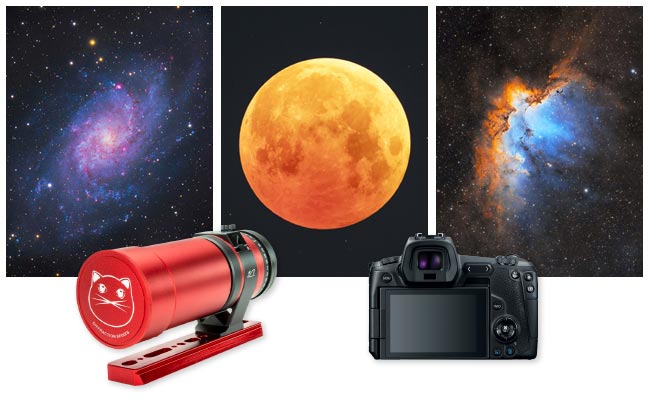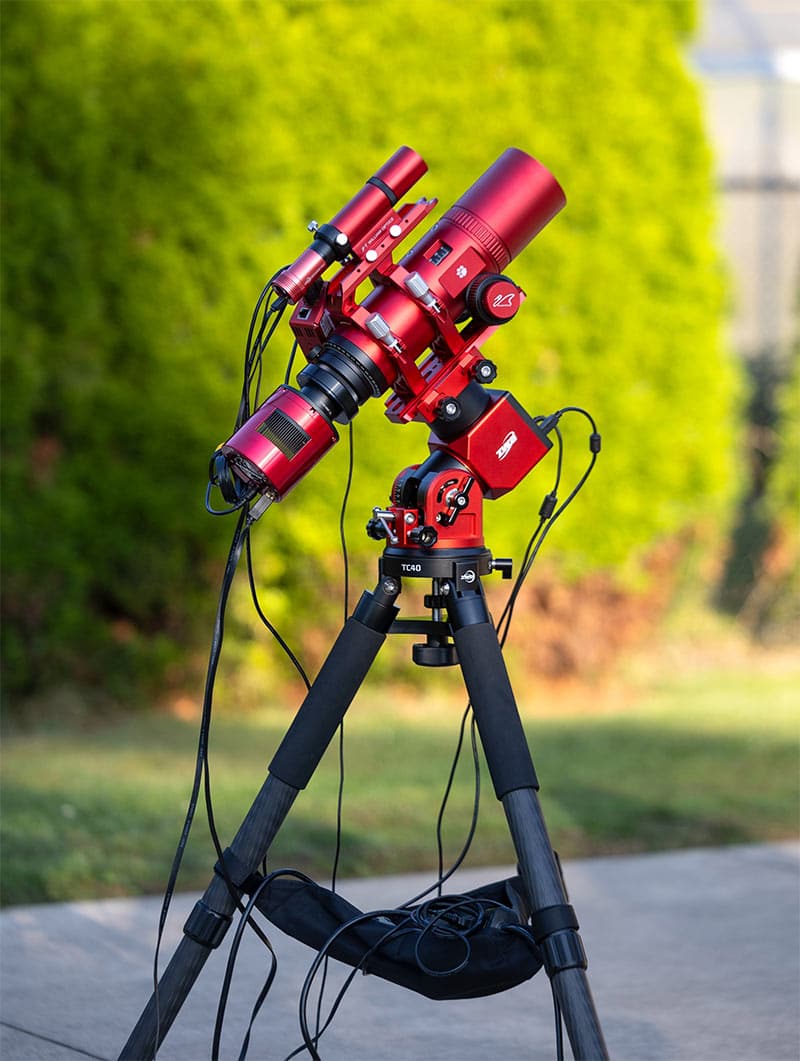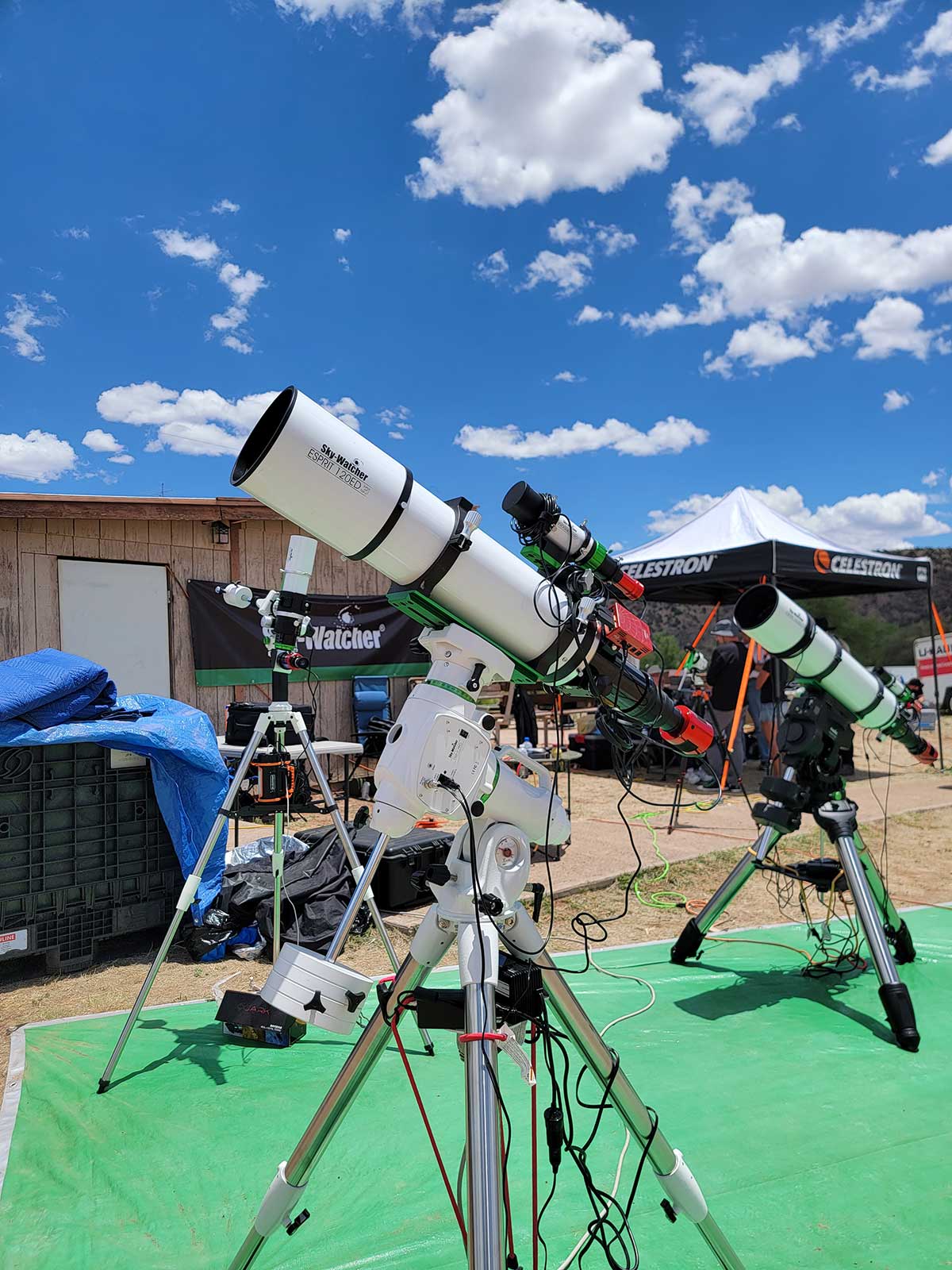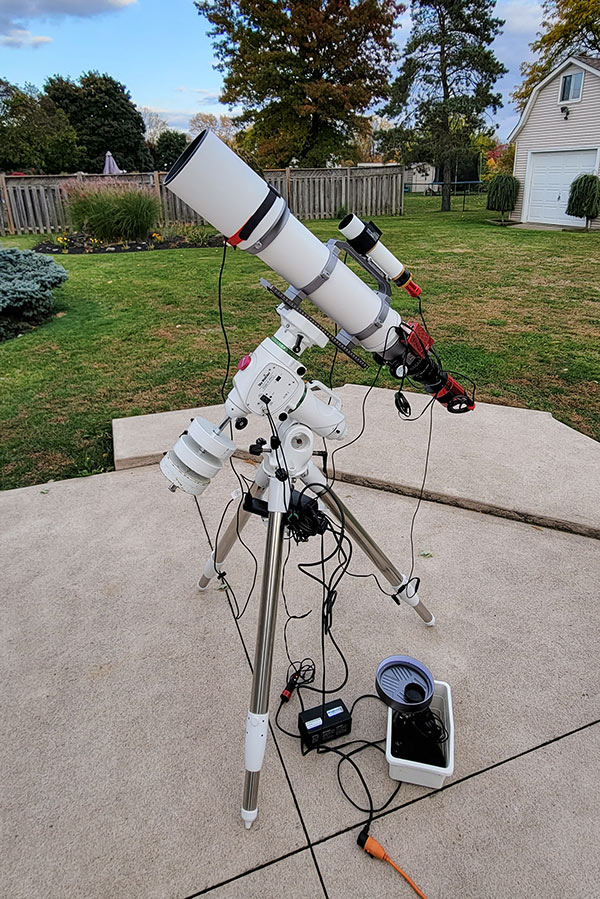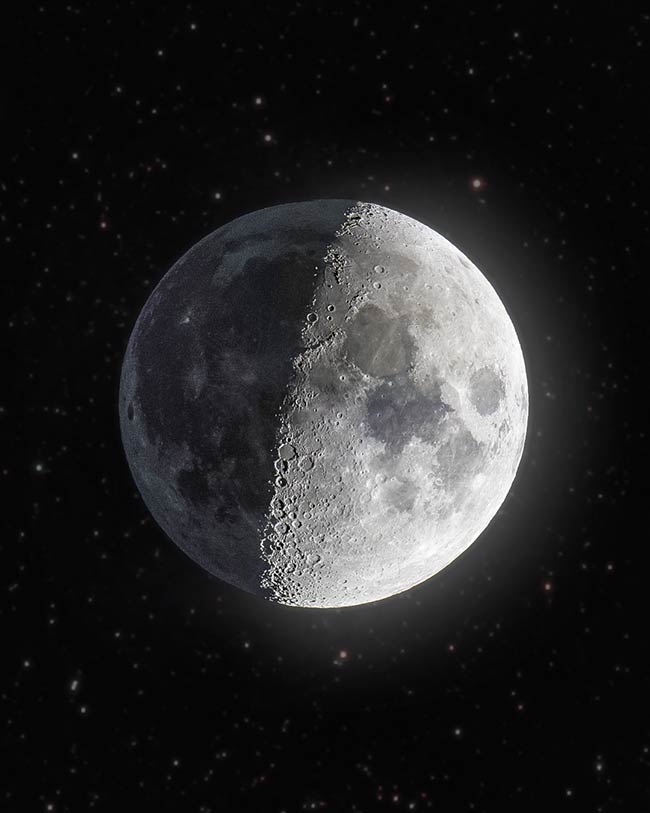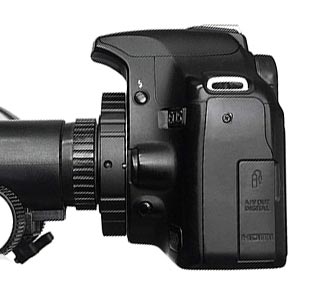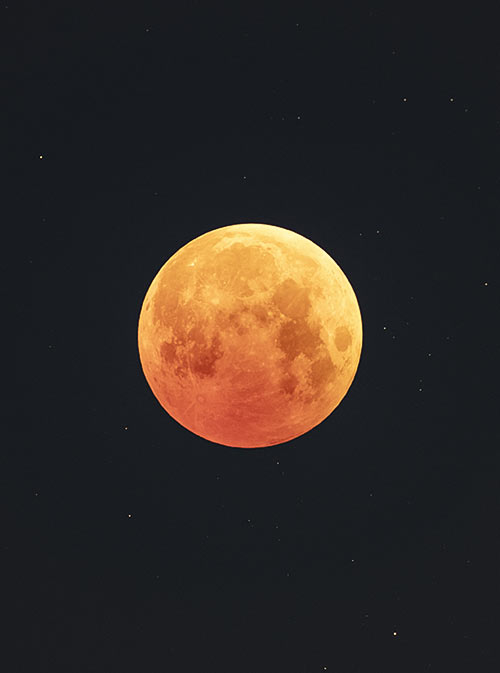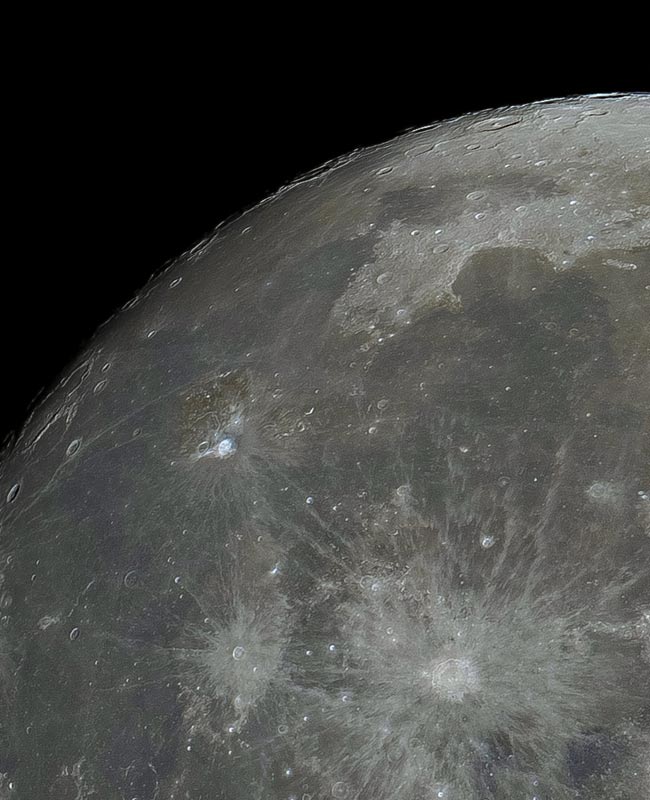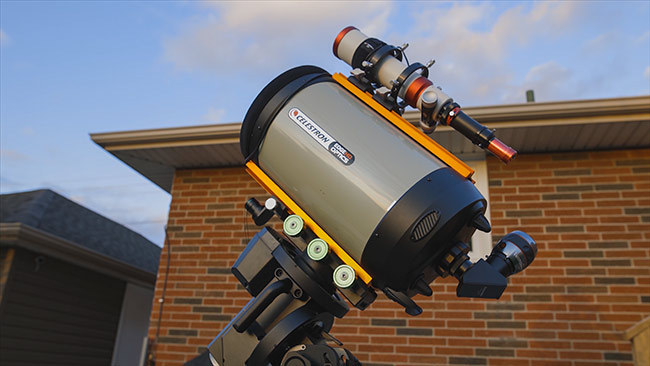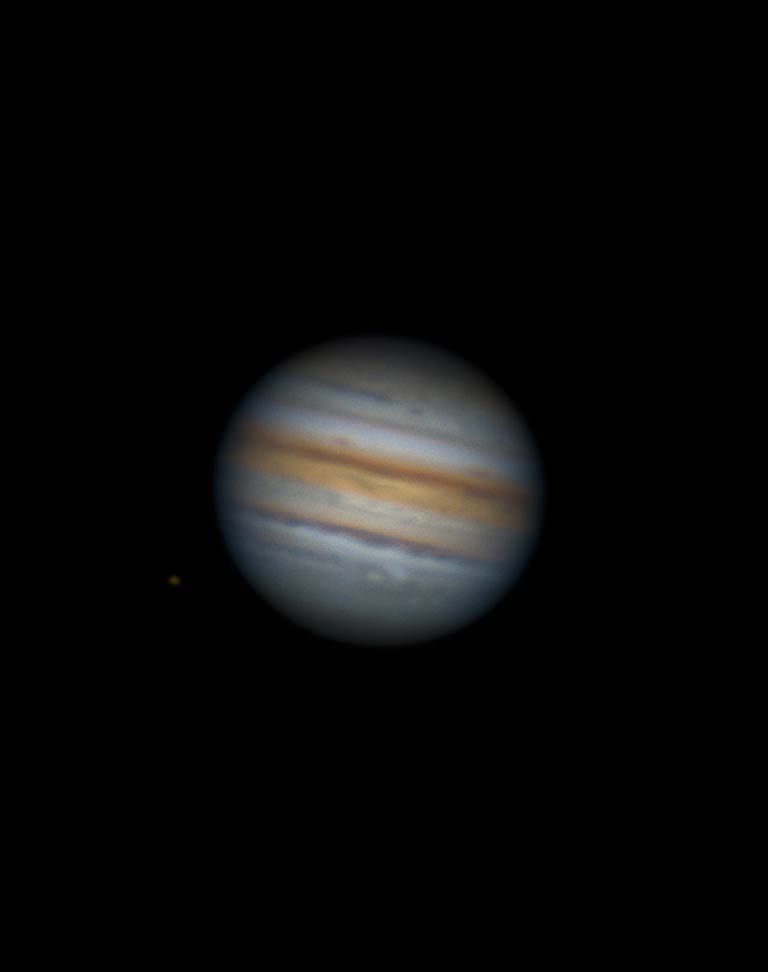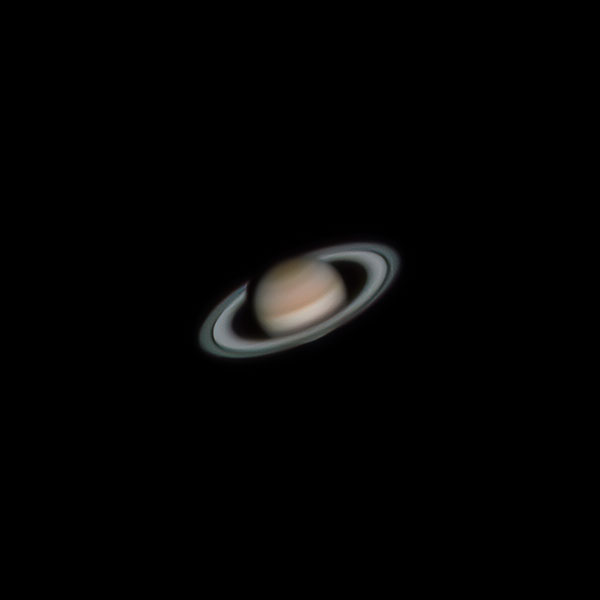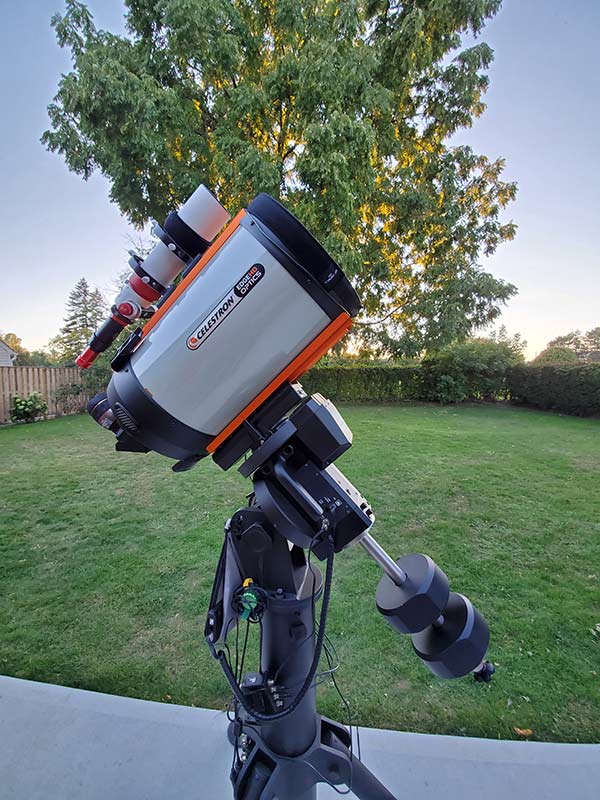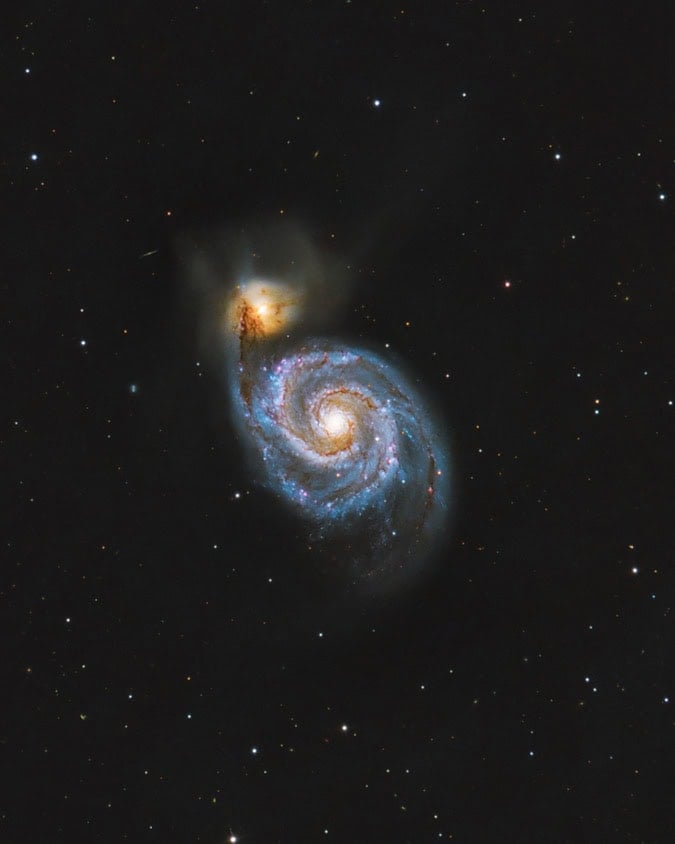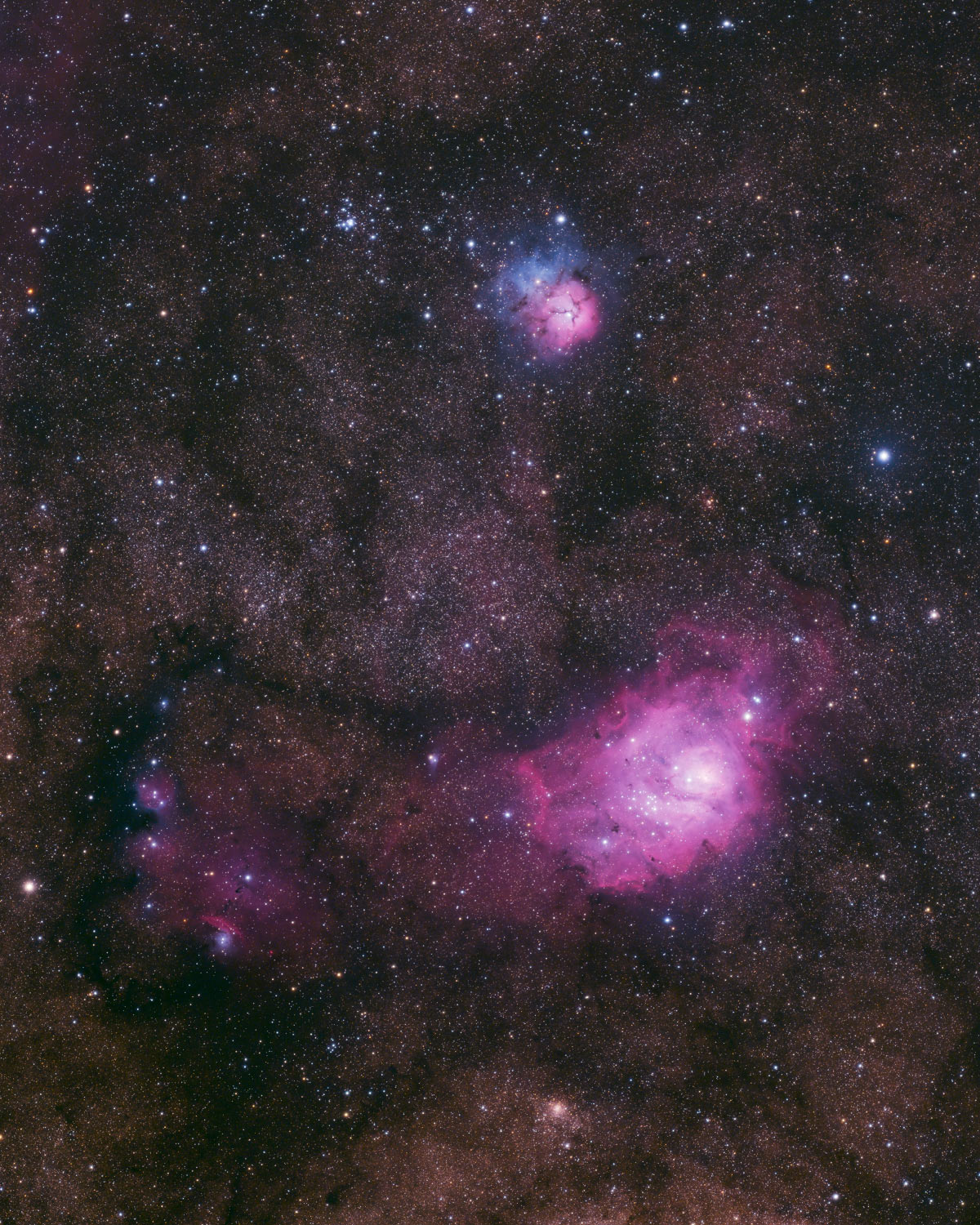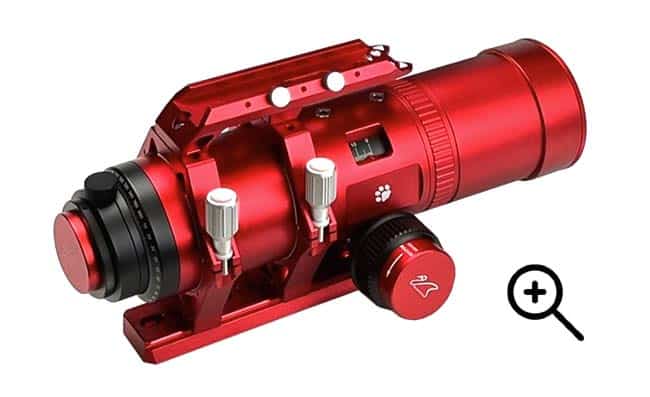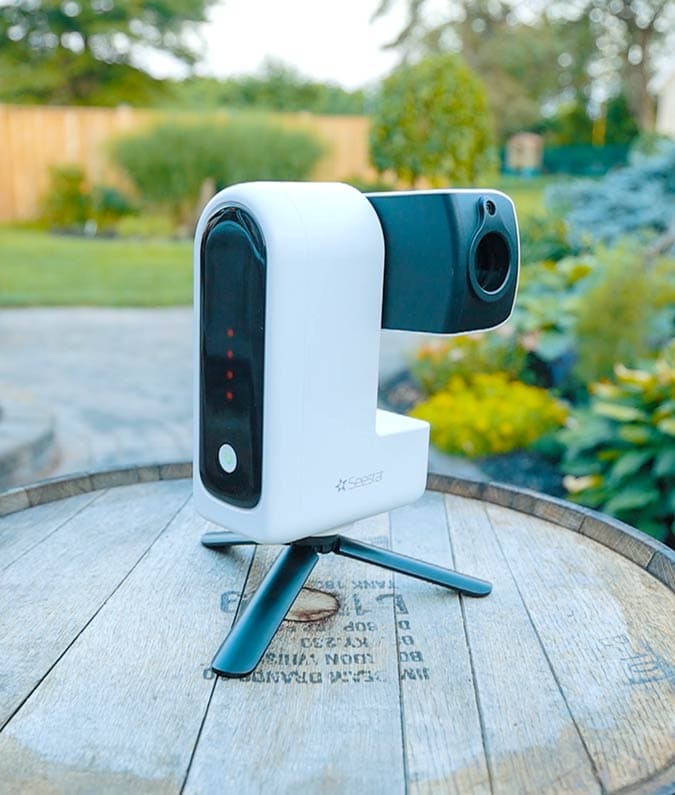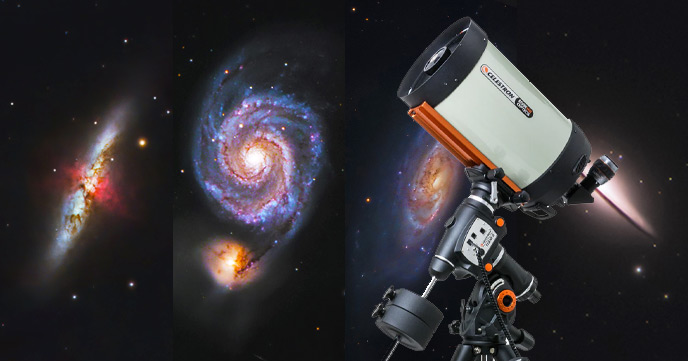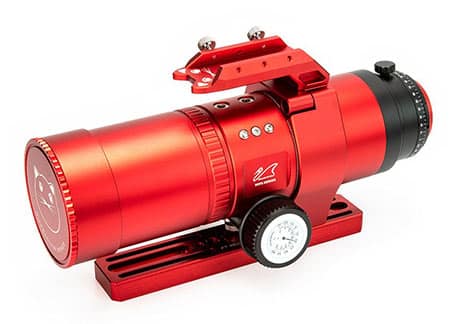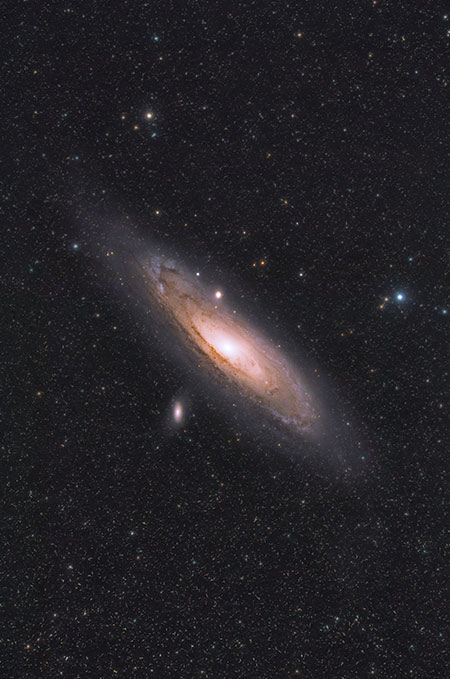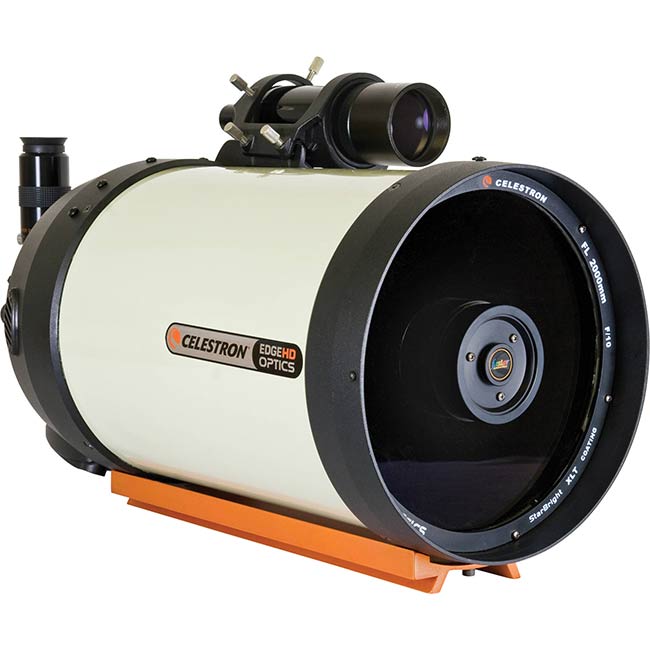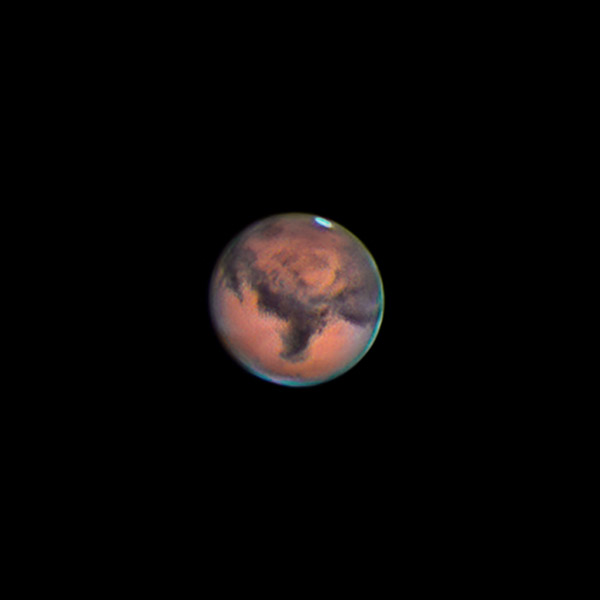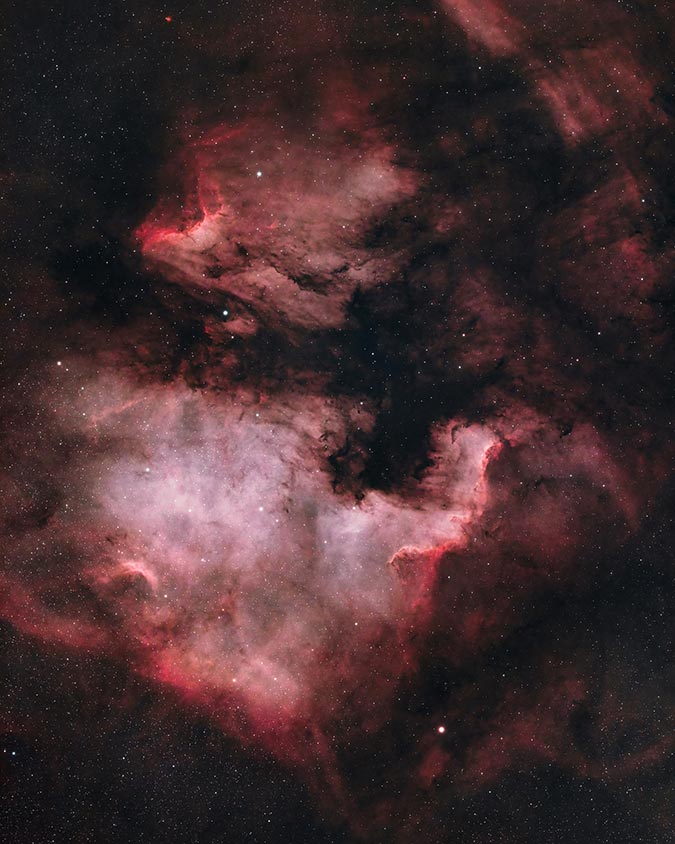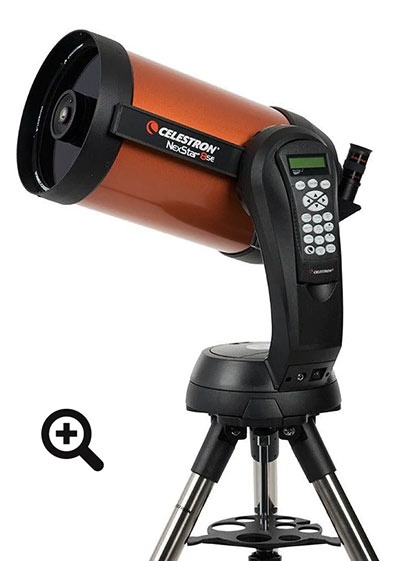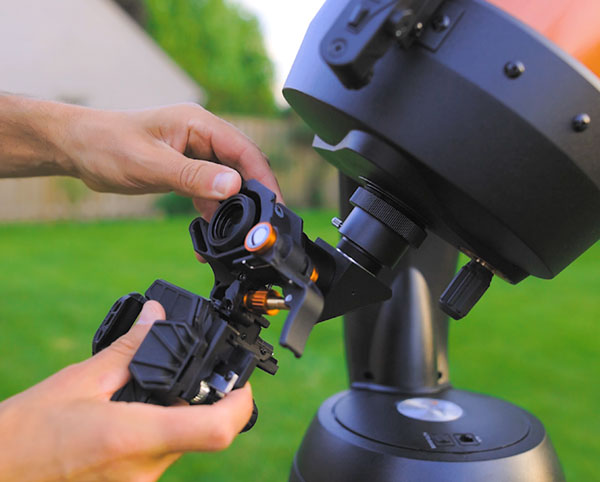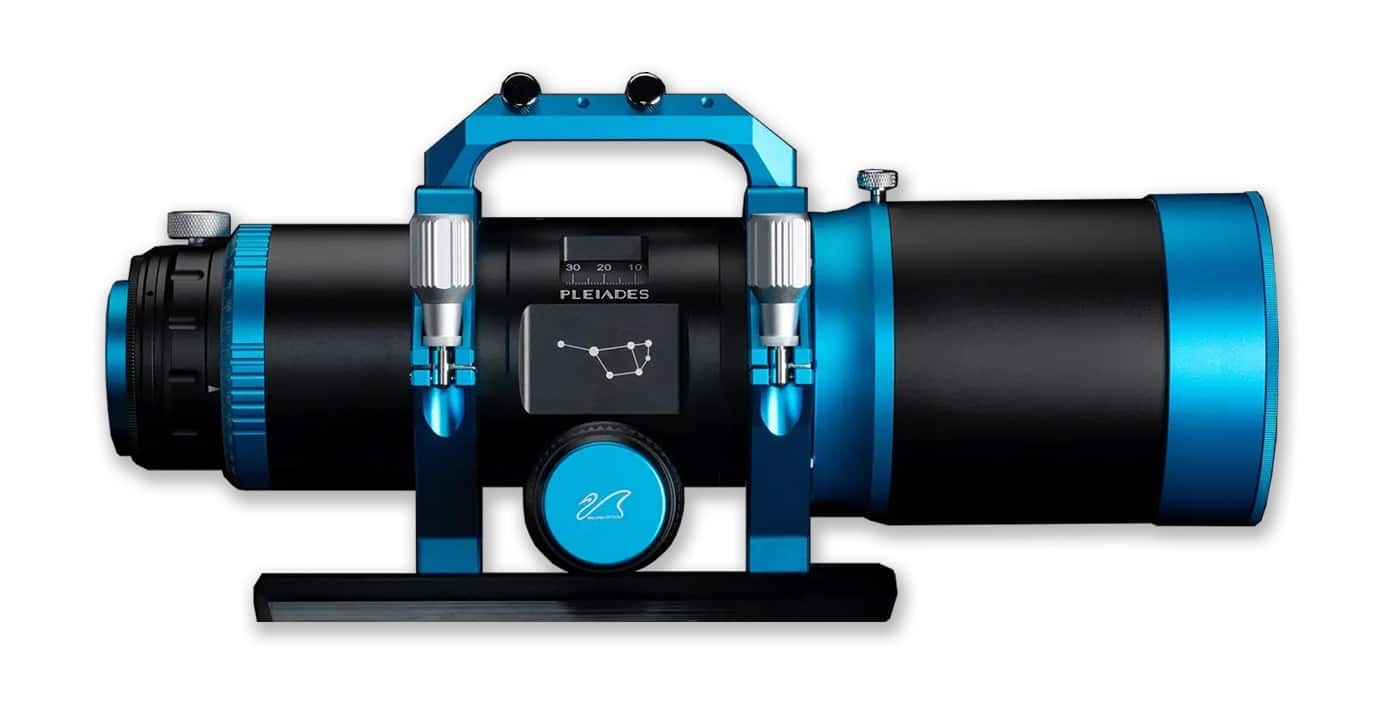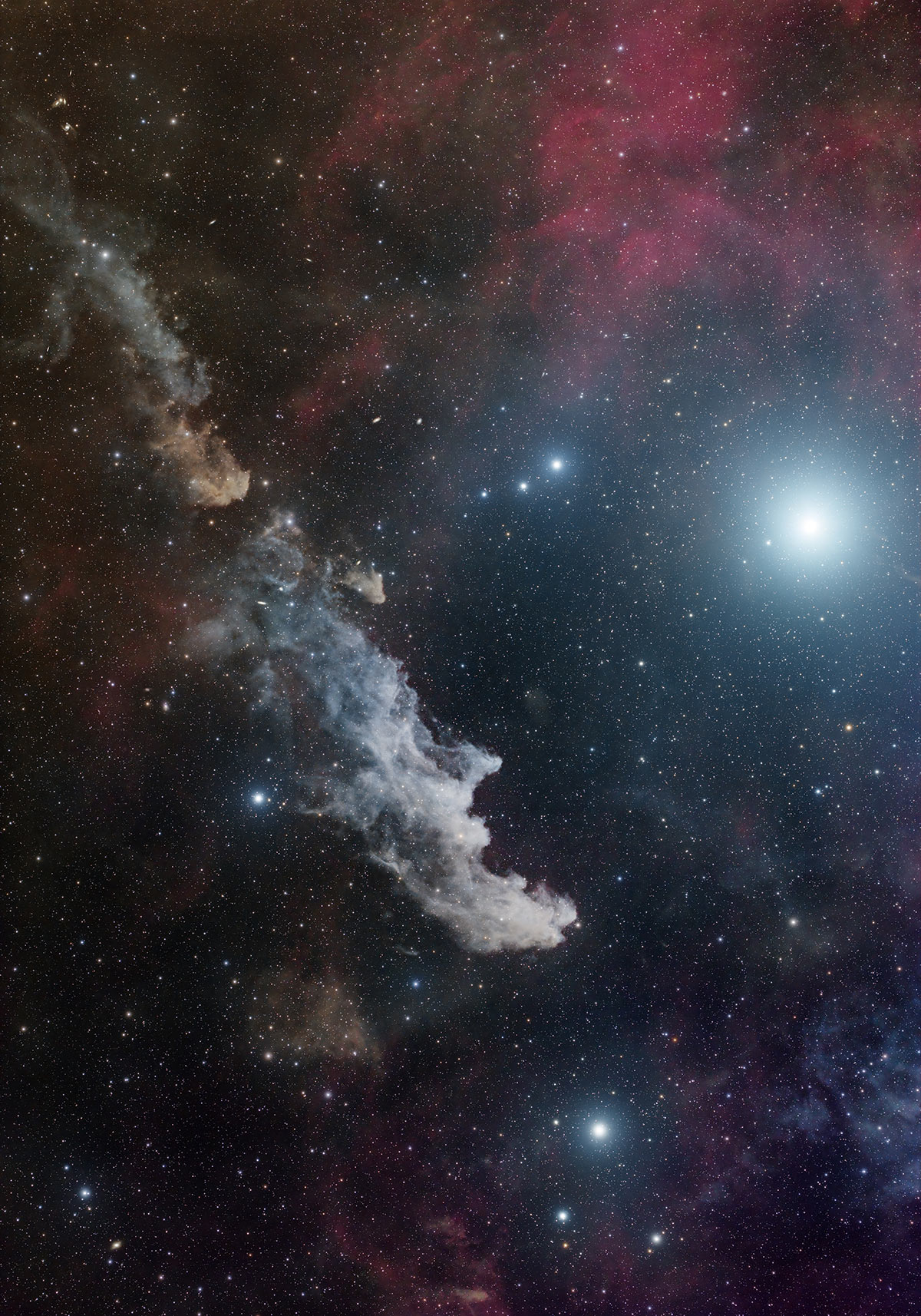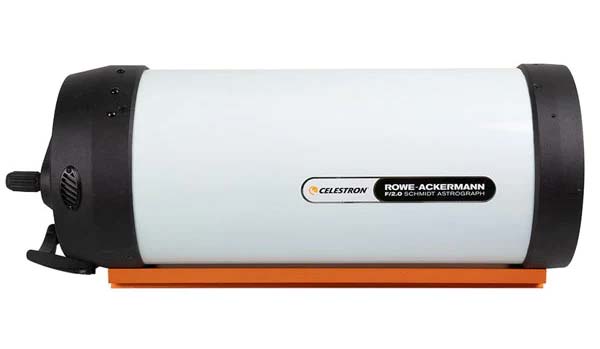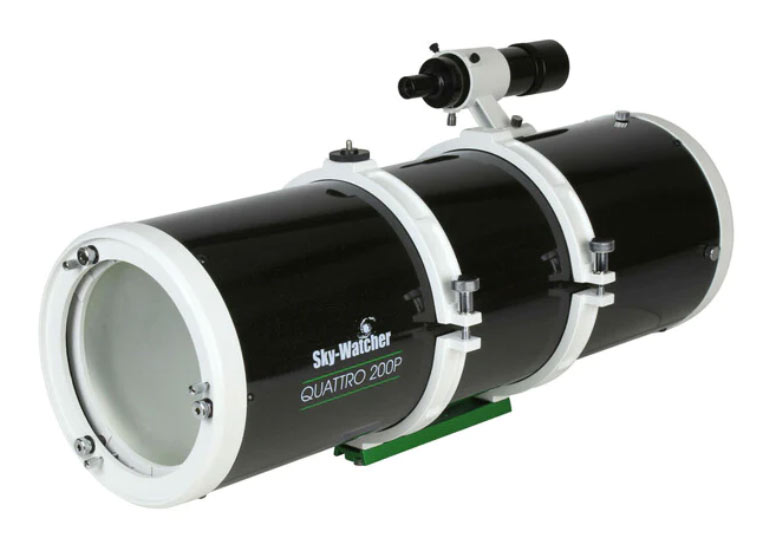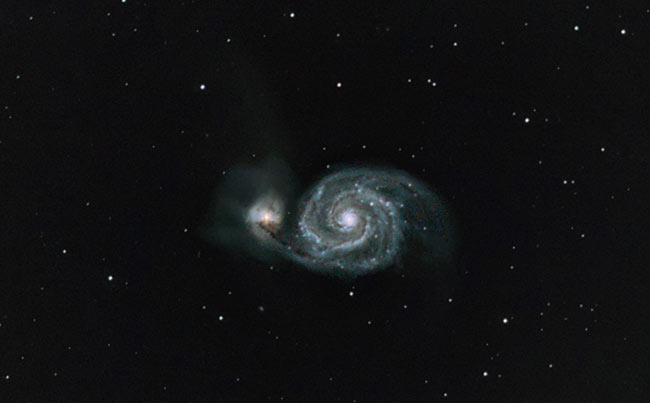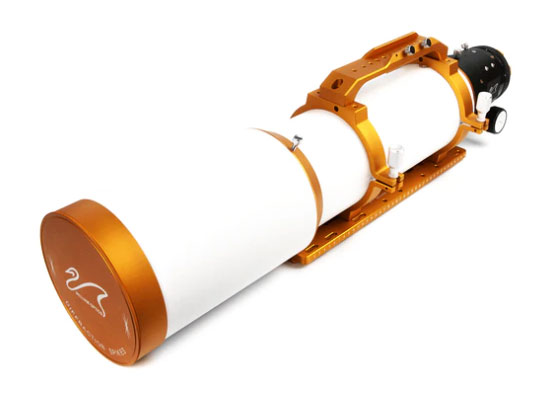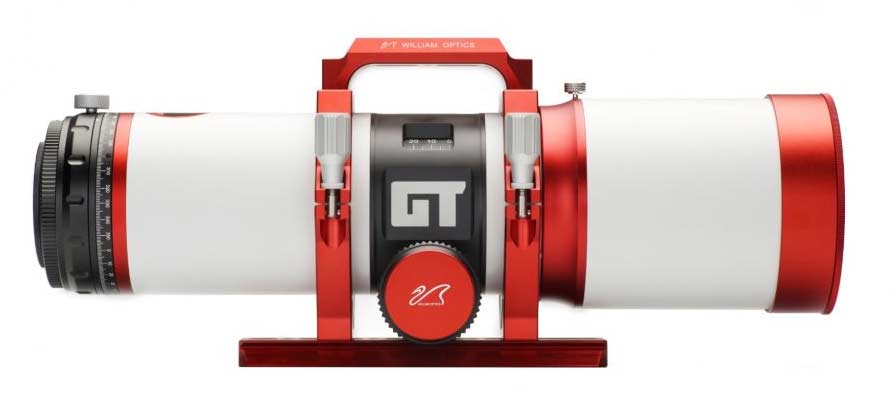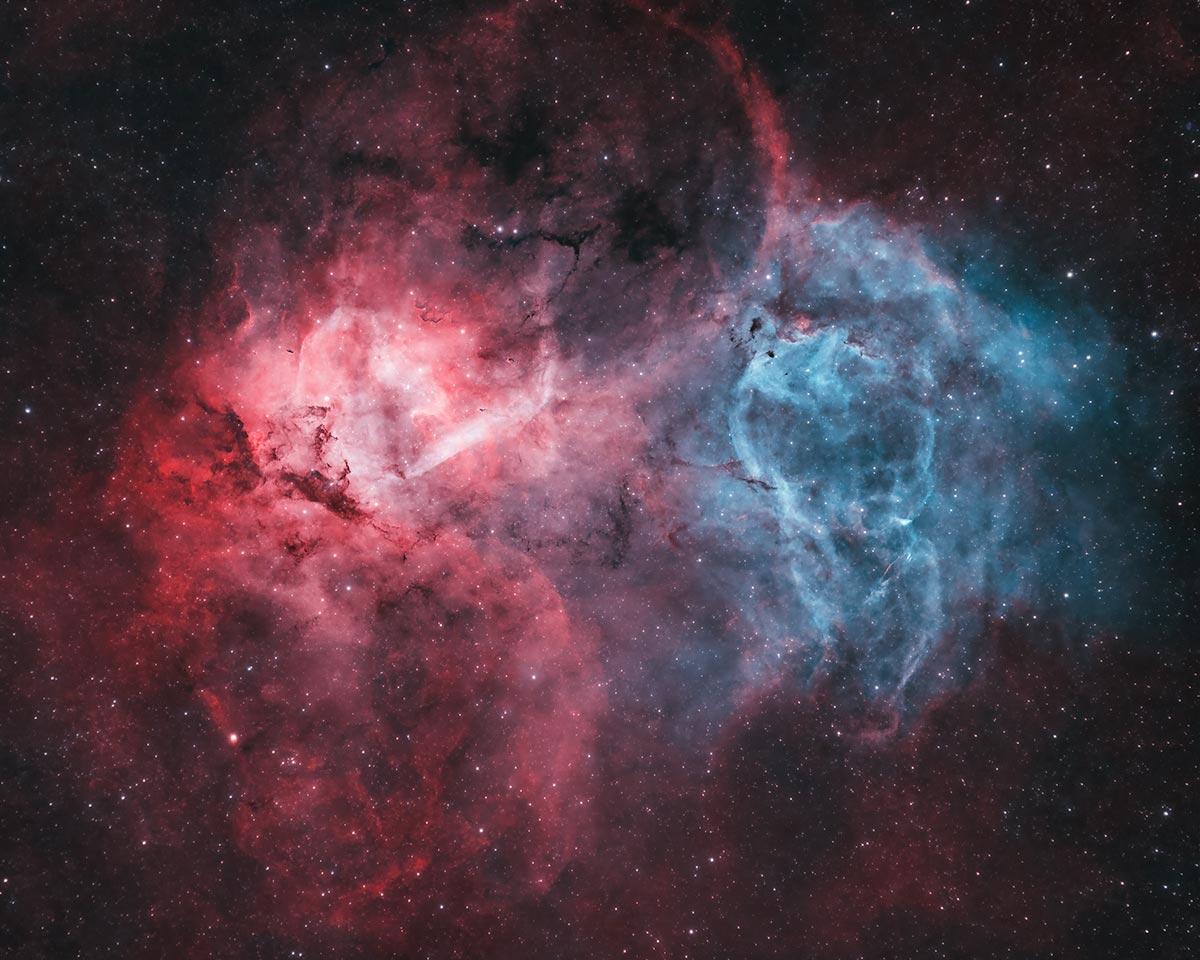Best Astrophotography Telescopes (2025)
This article was written by Trevor Jones. It was last updated on July 10, 2025, to include new telescope options and further clarification throughout.
In this article, I will share 10 of the best astrophotography telescopes available in 2025. What makes this list of suggestions different than other websites ‘best astrophotography telescope’ lists?
I’ve used all of them for astrophotography and have actual picture examples taken using each one.
I am a full-time astrophotographer with over 10 years of experience. Thanks to the viewership of my YouTube Channel, I have the unique opportunity to test a wide variety of astrophotography telescopes each year. Are there other great telescopes available that aren’t on the list? Absolutely.
I couldn’t possibly test and review every telescope on the market, although sometimes it feels like I have. Regardless, these are the telescope models that I can personally recommend based on the hands-on experience I have had.
The price range for the telescopes on this list is on the lower end (entry-level) when compared to professional-grade models. However, a quality telescope is by no means “cheap”. The most affordable options on the list hover around the $1000 mark (USD), so keep that in mind
I am confident that if you compare my list of best astrophotography telescopes with the countless other posts online, you will realize that the author has not used more than one of the models listed (if any).
I will provide photo examples taken through each of the astrophotography telescopes shared in this article, so you can make an informed decision about which model is best for your personal goals. Seeing what’s possible using a specific piece of astrophotography equipment is the only way to ensure that your expectations are in line with your purchase.
Whether your interests lie in deep-sky astrophotography of galaxies and nebulae or high-magnification views of the planets in our solar system, this list has you covered.
Recommended Telescope Kit for Deep-Sky Astrophotography
Recommended Deep-Sky Astrophotography Setup (see below)
- Camera: ZWO ASI2600MC Pro
- Telescope: William Optics RedCat 51
- Filter: Optolong L-eXtreme
- Mount: ZWO AM3
- Controller: ZWO ASIAIR
- Other Accessories: Power Supply, Dew Heaters
The complete system listed above is responsible for the following images taken from my backyard. It is an excellent example of a painless deep-sky astrophotography experience from an urban location.
A light pollution filter like the one listed (Optolong L-eXtreme) is an extremely practical choice for nebulae projects like the examples shown below. For more telescopes for astrophotography (of all types), read on.
Images I have captured using the RedCat 51 refractor telescope.
10 of the Best Astrophotography Telescopes Available Today
My goal for this article is to help you choose a telescope for photographing the night sky, and provide my expert (hands-on) experience with some of the best models available.
Many people who are in the position of selecting their first telescope for astrophotography already have a camera that they plan to use, and that’s great. If not, be sure to check out my article on astrophotography cameras to better understand what your options are.
The telescope you choose to pair with that camera will have a massive impact on both your early image results and the user experience and the overall enjoyment of the hobby of astrophotography. This is especially apparent when choosing the telescope type, as some types of telescopes present a steeper learning curve than others.
It is wise to consider what you want your astrophotography telescope to actually do. Are you hoping to take a detailed picture of the moon’s surface? Or are you more interested in capturing the stunning Orion Nebula and nearby star-forming regions?
Whether you’re brand new to the hobby or a budding astrophotographer looking to take the next step, I think you’ll enjoy my list of the best astrophotography telescopes available today and find the perfect model for your specific needs and goals.
If you’re looking for my top pick without reading any further, you can’t go wrong with an apochromatic refractor like the Askar SQA106. At a focal length of roughly 500mm at F/4.8, it can capture brilliant nebulae, large galaxies, the moon, and more.
I have used over 50 telescopes for astrophotography to date.
As I always say, the best telescope is the one you use most. In the case of visual astronomy, it’s hard to beat an 8″ Dobsonian telescope because of its unique balance between performance and value. For astrophotography, it’s a little different. There is no one-size-fits-all option.
Before purchasing your next telescope for astrophotography, here are some questions you will need to ask yourself:
- What is my overall budget?
- How big of a telescope can I (and my telescope mount) manage?
- What type of telescope is best for capturing pictures of planets?
- What type of telescope is best for capturing galaxies and nebulae?
- Does the telescope package include everything I need to start taking photos?
Your astrophotography telescope and camera are important pieces of your setup but not as critical as the equatorial telescope mount you’re using. You can have the finest optics on earth and not take a clear picture if your tracking is off. With this in mind, remember to choose a telescope that compliments your current tracking platform and is well within its maximum payload capacity.
As a general rule of thumb, it is best to keep the weight of your astrophotography telescope, camera, and all accessories to about half of the maximum recommended payload capacity of your telescope mount. Techniques such as autoguiding can help improve the mount’s tracking accuracy, but a heavy, unbalanced load will eventually cause problems.
For this reason, a refractor telescope design is one of my top choices for a beginner. The design is much more compact and lightweight compared to other designs such as the Newtonian Reflector. However, this convenience comes at the cost of being the most expensive telescope design (per inch of aperture) of any telescope type.
The William Optics FLT 132 is ready for a night of imaging in my backyard.
No matter which telescope you use for astrophotography, accurate polar alignment is crucial. This is done on your equatorial telescope mount via the altitude and azimuth adjustment knobs.
Next, I’ll cover the specific attributes of a telescope that are important for astrophotography. Some telescopes offer long focal lengths, capable of producing high-magnification images of the moon or planets. While others can collect a lot of light with fast optics, at shorter focal lengths. These telescopes can capture an ultra-wide field of view, revealing entire nebulae regions or multiple galaxies in a single shot.
Astrophotography Telescope Key Attributes:
- Focal Length (Magnification)
- Focal Ratio (Light Gathering Power)
- Telescope Diameter (Aperture)
- Optical Design (Effects Image Quality and Maintenance)
- Focuser Type (Effects Image Quality and Future Upgrades)
- Mounting Type (Important for Mount Compatibility and Accessories)
- Overall Weight (Important for Mount Compatibility)
The Importance of Focal Ratio
When choosing your first (or second) telescope for astrophotography, the focal ratio of the optical instrument is a key factor to consider. The Focal Ratio (or f-ratio, f-stop) is the measure of ‘speed’ in an optical system. A lower f-ratio collects light faster than a higher one.
Not only does a “fast” optical system with a low f-stop allow you to gather more light at once, but it also provides several additional advantages for astrophotography. The type of astronomical subject you plan to capture will dictate just how important a fast focal ratio will be.
An f-ratio of F/10 will work just fine when photographing bright solar system objects, such as the Moon or planets. However, if your interests lie in deep-sky astrophotography of dim, distant objects, everything from focusing to tracking accuracy becomes more challenging.
For example, a fast optical system with an f/4 or lower aperture means that you can take shorter exposure images for your astrophotography project, making tracking accuracy slightly less critical for a crisp shot. Because the telescope can collect more light in a single exposure, your telescope mount tracking accuracy does not need to be as precise as it would for a slower optical system taking 5-10 minute images (in theory).
The reality is that any amateur astrophotographer will want their tracking accuracy to be stable enough to take whichever exposure length they wish. However, being able to collect a healthy amount of light (or signal) in a shorter amount of time is a nice option to have.
The f-ratio of your telescope is defined by dividing the focal length by its aperture (optical diameter), which is measured in millimeters (mm). For example, my William Optics RedCat 61 apochromatic refractor has a focal length of 300mm, with an aperture of 61mm. This means that the focal ratio for this telescope is F/4.9. (300mm divided by 61mm).
The William Optics RedCat 61 Petzval Apochromatic Refractor.
Understanding Focal Length
The focal length of the telescope is important for astrophotography because it determines your overall field of view in the night sky and how big an astronomical target will appear in your camera. A telescope with a focal length of 400mm or shorter is considered “wide-field”, while anything above 2000mm is considered to be “high-magnification”.
Certain objects in the night sky, such as a large emission nebula or the Andromeda Galaxy are multiple times larger than the full moon. While others, like a small spiral galaxy, may be so small from our vantage point on Earth that they appear as a small smudge even at high magnification.
If you are looking for a good mid-range telescope focal length that will allow you to capture a wide variety of subject sizes, 500-800mm is a great range to stay between. Thankfully, this is a common focal length range for many astrophotography telescopes on the amateur market.
The Askar SQA106 has a practical focal length of 509mm.
The Askar SQA106 shown above has a healthy aperture of 106mm and provides impressive details to projects shot at a wider field of view. When comparing refractor telescopes of a similar focal length, remember to consider the telescopes’ aperture (diameter of the objective lens) as well.
In general, a wider field of view (short focal length) telescope excels at deep-sky astrophotography of large nebulae regions, and high-magnification telescopes are better for small galaxies, as well as solar system photography.
Telescopes for Moon Photography
I captured this photo of the moon using a Sky-Watcher Esprit 100 ED refractor telescope and a mirrorless camera (Canon EOS Ra). This image is a composite of two exposures to create a 3D effect.
Moon photography is one of the first types of astrophotography beginners experience because it is approachable and rewarding. A crisp photo of the waxing crescent moon is a beautiful sight. A project like this has the power to inspire you to develop your skills in this hobby further.
There are a number of ways to go about taking photographs of the moon through your telescope, but I find the most effective to be attaching your DSLR camera directly to the telescope. This requires a t-ring and t-ring adapter fitted to the DSLR camera body like a lens.
Use a standard t-ring and adapter to connect your DSLR to a telescope.
In this configuration, you are utilizing the telescope’s native (fixed) focal length without adding an additional eyepiece between the camera sensor and the telescope. A computerized equatorial telescope mount with motorized tracking is essential for capturing a clear shot at high magnification.
To focus your DSLR camera you simply use the focuser knob on the telescope itself to dial it in. To capture the entire disc of the moon in a single shot (about 31 arcmins or 1/2°), you’ll need a focal length of about 1000mm or less (with an APS-C sensor camera). Any more than that, and you will need to create a mosaic image using multiple panels.
I captured the total lunar eclipse on November 8th, 2022, with a Sky-Watcher Esprit 100 refractor.
Moon Photography using a Smartphone
Smartphone astrophotography usually involves pointing your phone camera up to a visual eyepiece (with increased magnification) to capture bright objects through your telescope. Most modern smartphones have a “night mode” (or even an astrophotography mode) option with increased light sensitivity and/or longer exposure settings to play with.
It can be tricky to keep the camera steady and at the right angle against the eyepiece to produce a clear shot. Smartphone adapters like the Celestron NexYZ are a great solution to this problem. A tracking telescope mount will make this process much easier than if you were to attempt it using a manual telescope mount such as a Dobsonian.
While a DSLR is the most approachable option for most people, a dedicated CMOS planetary camera may be a good fit for those looking to capture even more detail. Cameras, such as the ZWO ASI290MM Mini, use a high frame rate to capture short video files of the Moon’s surface. The best individual frames from the video file (usually in AVI or SER format) can then be extracted and stacked to produce an image with remarkable detail.
A close-up of the surface of the Moon. Canon EOS Ra and Sky-Watcher Esprit 150.
While it’s true that almost any decent telescope can provide you with an impressive photograph of the moon, ones with a focal length of 1000mm will help you get in nice and close. For the image above, I paired a full-frame mirrorless camera with a refractor telescope with a focal length of 1050mm.
Some people prefer to use a Schmidt-Cassegrain telescope (SCT) for moon photography because of the crisp, high-magnification optics. I use a Celestron Edge HD 11 for most of my solar system photography, including close-ups of the lunar surface. This telescope has a native focal length of 2800mm at F/10.
I use a Celestron Edge HD 11 for lunar and planetary astrophotography. This telescope has a native focal length of 2800mm.
A Maksutov-Cassegrain (Mak-Cass) is another popular choice for this type of astrophotography, but I personally have not experienced a Maksutov telescope design. Because the moon and planets are so bright, the slower focal ratios of these telescopes (F/7 and above) do not diminish the experience or your results.
Compared to a high-quality refractor telescope, you get much more aperture for your dollar with an SCT. The Celestron Edge HD 8 is an extremely popular choice, which offers much more aperture than any comparable refractor telescope for the price. The downside of non-refractors is that collimation needs to be checked and adjusted every so often.
Another consideration to make when deciding on your next telescope is the size of the telescope mount you will need to carry it. For example, the large Celestron Edge HD 11 SCT weighs nearly 30 pounds. With camera and autoguiding accessories on board, the payload is closer to 45 pounds, meaning a robust astrophotography mount like the Sky-Watcher EQ-8, or similar, is recommended.
To make things even more interesting, any issues in the tracking accuracy of your telescope mount are magnified when using a long focal length. These are some of the reasons that I suggest a shorter focal length refractor telescope for those new to deep-sky astrophotography.
Telescopes for Photographing Planets
I captured this photo of the planet Jupiter using a ZWO ASI462MC and Celestron Edge HD 11.
It should come as no surprise that you need some serious magnification to capture the surface of a planet up close. A healthy combination of aperture and focal length will help you see more details on the planet and take better pictures.
There is a reason why some of the best solar system photographers in the world use 14″ Schmidt-Cassegrain Telescopes. The large aperture means plenty of light-gathering power, and the long focal length brings a planet, that looks small to the naked eye, in for a closer look. When it comes to planetary photography, image scale (which affects the size and resolution of your subject) is an important factor to consider.
The focal length of your telescope is fixed. When you attach a camera directly to the focuser draw tube, this is the fixed magnification your camera will view the sky at. However, an eyepiece or Barlow lens can increase the native focal length or magnification by a factor of 1.5x, 2x, 3x, etc. The trade-off for this simple accessory is that your view will be dimmer, and probably a lot less sharp.
I personally do not use a Barlow lens often when photographing planets or the Moon with my long focal-length telescope. I prefer to capture a brighter image of the planet at the native magnification and increase the size (if desired) in post-processing. This may change in the future if I finally decide to invest in a quality Barlow lens, such as a Tele Vue Powermate.
A focal reducer on the other hand, reduces the overall focal length of your telescope. You may wonder why you would ever want less magnification out of your telescope. Well, in the world of deep-sky astrophotography, there are many times when you would gladly take a step back to capture a large nebulae region. You also get the incredible, but true benefit of greater light-gathering power (a lower f-ratio).
The Planet Saturn from my backyard. ZWO ASI290MM Mini, Celestron Edge HD 11, Sky-Watcher EQ8-R Pro.
Great seeing conditions can help you take better images of all types of astrophotography projects, but it is particularly important when photographing planets up close. The best optics in the world can’t help you see through heavy atmospheric disturbance.
Large aperture telescopes (8 inches or more) can be especially cruel when it comes to performance under less-than-ideal conditions. If you are used to capturing deep-sky objects using a compact, wide-field refractor at a “forgiving” image scale (like I was), you may be surprised at just how much poor seeing affects the quality of your image.
A reflector telescope can be a fantastic choice for planetary imaging, but a long focal length reflector means a large, heavy optical tube. This can be taxing on your equatorial telescope mount (and your back), and magnify any issues in balance or tracking accuracy.
In my opinion, the most practical choice for planetary astrophotography is the Schmidt-Cassegrain design. This design gives you the aperture and focal length you need in a stocky, manageable size. Compared to a large refractor, they are much more affordable, and can even be used for other types of astrophotography in various configurations.
The Celestron Edge HD 11 telescope on a Sky-Watcher EQ8-R Pro mount.
All of my best planetary astrophotography images were captured using this telescope, with a high-frame-rate astronomy camera attached. Even though this telescope weighs nearly 30 pounds, it is still manageable for me to set up on a clear night and pack away the next morning.
A capable computerized equatorial telescope mount is essential for planetary astrophotography. High-magnification views and heavy telescopes require a robust model with adequate payload capacity. Telescope mounts in this range can be expensive, but under-mounting a large telescope is a disaster waiting to happen.
I have had success using a number of heavy-duty telescope mounts for astrophotography including; the iOptron CEM60, Celestron CGX-L, and Sky-Watcher EQ8-R Pro. All of these models can handle 50+ pounds of telescope equipment and are considered to be “observatory-grade” mounts.
Telescopes for Galaxy Photography
Deep-sky astrophotography includes photographing everything from open star clusters to spiral galaxies. Many newcomers to the hobby assume that a large telescope with extreme magnification is needed to capture such wonders.
Fortunately, that is not the case. In fact, a short focal length (low magnification) telescope has numerous advantages for galaxy and nebula photography. This is because a lot of the astronomical targets beginners go after are actually quite large from our view here on Earth.
Galaxies vary in size, but they are generally smaller than nebulae. There are some exceptions, of course. The Andromeda Galaxy, Pinwheel Galaxy, and Triangulum Galaxy are large enough to capture in detail through a compact, wide-field refractor telescope.
The Whirlpool Galaxy captured with a large Newtonian Reflector Telescope. (Sky-Watcher Quattro 300P)
A big ‘light bucket’ with plenty of aperture has its advantages in the visual astronomy world, but this trait is much less important for long-exposure deep-sky astrophotography. In fact, some of my best astrophotography images ever taken were using a telescope with a diameter of 75mm or less.
Because deep-sky imaging involves collecting several hours’ worth of light on a subject, you can compensate for a lack of aperture and photon-collecting ability with integration. Your astrophotography camera can see much deeper than your own eyes ever could.
For this reason, a high-quality apochromatic (APO) refractor telescope is an excellent choice for galaxy photography. This will ensure that you capture crisp, color-corrected, high-contrast images of beautiful galaxies in the night sky (sometimes several at once). A triplet APO is best, but a well-corrected Doublet with a dedicated field flattener or corrector is also fine.
If you wish to capture some of the many ‘medium-sized’ galaxies up close, consider investing in a telescope with at least 750mm of focal length for an improved image scale over a smaller, wider option. Remember that as you increase magnification, the tracking accuracy of your telescope mount is increased. This is where autoguiding using software like PHD2 guiding comes into play.
The Sky-Watcher Quattro 300P is an incredible telescope choice for galaxy photography.
The type of object and size lend themselves well to a Newtonian Reflector telescope, particularly an 8″ Newtonian astrograph or larger. The enormous Sky-Watcher Quattro 300P shown above requires a heavy-duty telescope mount to operate.
An 8″ Newtonian Reflector Astrograph offers a great balance of affordability and performance. Yes, the overall size and weight of the tube are rather cumbersome, but once you’ve dialed in the collimation, you can expect to see some incredible detail (and lovely diffraction spikes) on your galaxy subject.
Telescopes for Nebula Photography
The Lagoon and Trifid Nebula region. RedCat 61 and ZWO ASI2400MC Pro camera.
A compact, short focal length refractor in the 250-500mm range is an ideal choice for nebula photography. This is where I personally spend the most time in astrophotography, and the projects you can take on at this range are endless.
Many of the most popular nebulae targets for astrophotography are quite large. A large telescope with a long reach is ideal for capturing a small portion of these nebulae up close, but to reveal the entire structure, a mosaic would be necessary. A wide-field instrument, such as the William Optics RedCat 51, can capture massive deep-sky objects like the North America Nebula in a single frame.
The best part about using a small refractor telescope for astrophotography is that they are more forgiving in terms of tracking accuracy and balance. You will still want your system running as best as possible, but slight errors in tracking or balance are not as magnified as they are at high magnification.
This can also save you some money upfront, as a telescope of this size does not require a large equatorial mount to operate. In the example below, you’ll notice that the telescope is light enough to run on a portable star tracker.
The William Optics RedCat 61 is a fantastic imaging telescope with a robust focuser.
The forgiving, painless nature of a small refractor is why it is my top recommendation for a beginner in the world of astrophotography. Once you master the art of taking tracked photos of nebulae at a wide field of view, you can increase the magnification of your primary imaging telescope to capture smaller objects in detail.
Smart Telescopes
Smart telescopes are revolutionizing the amateur astronomy experience by allowing ordinary people to capture incredible images of space without any prior experience in astrophotography.
Models like the Seestar S30 (shown below) combine modern camera sensor technology with computerized tracking platforms to deliver impressive images of deep-sky objects and solar system objects like the Sun and Moon.
Their primary method of delivering memorable images for you to enjoy is through live-stacking, where the smart telescope continuously takes images and ‘stacks’ them to improve the quality over time.
Smart Telescopes are an incredible option to consider for deep-sky astrophotography in 2025. (Seestar S30)
Smart telescopes typically have a small, apochromatic refractor telescope 30-50mm incorporated into the all-in-one device. If you’re looking for a larger model, consider the Celestron Origin (6-inch RASA telescope).
Telescope for All Types of Astrophotography?
I am often asked, “If you could choose just one telescope for astrophotography, what would it be?”. I understand that newcomers to astrophotography are on a limited budget and, more importantly, looking for a positive first experience. Unfortunately, the best astrophotography telescope for you relies heavily on your expectations and interests, so a broad answer that covers all bases is not realistic.
However, if you are looking for the closest ‘one-size-fits-all’ option, it would probably be an 8″ Schmidt-Cassegrain telescope (SCT) like the Celestron Edge HD 8. I would only consider this to be an option if you have a healthy budget, previous photography knowledge, and understand the fundamentals of equatorial tracking telescope mounts.
This telescope will require a capable, intermediate-level tracking mount such as the Sky-Watcher EQ6-R Pro. Because the optical tube assembly (OTA) weighs 14 pounds on its own, expect the overall payload of your imaging rig to reach about 20 pounds or more.
The Celestron EdgeHD 8 is a great option for those looking for a bit of everything.
An 8″ SCT like this can be used in three practical orientations for different types of astrophotography:
- Native Focal Length (2032mm at F/10) for photographing planets
- Using a Focal Reducer (1422mm at F/7) for galaxies and nebulae
- Using HyperStar (406mm at F/2) for large nebulae and star fields
The 3-in-1 option is quite unique for a single telescope, but again, utilizing these capabilities will require additional hardware and a steep learning curve. I personally own and enjoy the larger version of this telescope (11″) and it is a wonderful option when photographing planets.
Now that I have provided you with a crash course in astrophotography telescopes, it’s time to share some specific models with you that I have personally enjoyed over the years. For some of the selections on this list, I have provided the latest version of the telescope that is available in 2022. There may be some slight changes in the design, but the overall experience and performance should be the same.
Best Telescopes for Astrophotography
Please keep in mind that the telescope itself is just the tip of the iceberg. Filter wheels, autofocusers, and focal reducers are just a few of the many deep-sky astrophotography accessories you will one day consider adding to your setup (trust me).
However, your primary imaging telescope is still one of the most important purchases you will make when building a deep-sky rig. A basic trait to categorize the telescopes into is focal length, as this is the most obvious choice to make, depending on your imaging goals.
Whichever model you choose, ensure you budget for any additional hardware required to mount the telescope, as well as other potential imaging accessories, such as field flatteners and camera adapters.
William Optics RedCat 51 WIFD (Gen3)
- Telescope Type: Petzval Refractor
- Best Suited For: Large Nebulae
- Best Feature: Compact and Portable
William Optics RedCat 51 Petzval APO.
The William Optics RedCat 51 sits at the number 1 spot because I believe it offers beginners their best chance at a successful first deep-sky image of the night sky. With an ultra-wide field of view (250mm), the focal length is this telescope’s biggest drawback but also its greatest strength.
The original RedCat 51 has a Petzval lens design, which is a hybrid of the traditional triplet apochromatic refractor design. Clocking in with a focal ratio of F/4.9, this beautifully designed little ‘scope comes with some welcomed accessories, including a built-in Bahnitov mask and innovative ‘cat saddle’ mounting plate.
The question is, do you want to capture large nebulae in the night sky? Do you want a lightweight, forgiving telescope that doesn’t force you to buy an expensive computerized telescope mount? If so, then the RedCat 51 is a fantastic option.
The original version of this telescope used a helical focuser (which can still be automated), similar to a camera lens. If you prefer a traditional rack-and-pinion design, the new WIFD (version 3) design is an attractive option.
I captured the following image of the Andromeda Galaxy using the RedCat 51 on a small star tracker (Sky-Watcher Star Adventurer).
The Andromeda Galaxy captured using the William Optics RedCat 51.
If you are most interested in photographing small galaxies and solar system objects like the moon and planets, this wide-field refractor is not for you. Those objects are just too small to capture in any detail at a focal length like this.
The bottom line is, the RedCat 51 offers impressive optics (great color correction, flat field) in a practical, fun size. I have thoroughly enjoyed my time with this telescope since it arrived in 2018, and still use it for wide-field projects to this day.
The larger model, the William Optics RedCat 71 is another great option to consider, offering the same Petzval design in a larger aperture (350mm at F/4.9).
Askar SQA106
- Telescope Type: Quintuplet Petzval Astrograph Refractor
- Best Suited For: Nebulae, Galaxies, the Moon
- Best Feature: Sharp, Color-Corrected Optics
The Askar SQA106 is a fantastic performer.
The Askar SQA106 is a quintuplet Petzval astrograph with a focal length of 509mm at F/4.8. Yes, 509mm. This focal length means that the SQA106 was made for wide-field nebula imaging.
This 5-element lens design doesn’t require an additional field flattener, nor does it demand a specific backfocus distance. According to the specifications, it supports full-frame camera sensors with a massive 55mm image circle.
If you’re in the market for a high-performance astrograph with full-frame capabilities and a premium build, the Askar SQA106 is definitely worth a look.
The Spider Nebula and The Fly Nebula. Askar SQA106 + ZWO ASI2600MC Air.
Celestron Edge HD 8
- Telescope Type: Schmidt-Cassegrain Telescope
- Best Suited For: Planets, The Moon, Galaxies
- Best Feature: Sharp, High Magnification
The Celestron Edge HD 8 is the little brother to the 11-inch version that I currently own. The reason I list the 8″ model is that I think the 11″ size may be a little “too much telescope” for some. It is quite heavy and requires a serious equatorial tracking mount.
This telescope weighs about 15 pounds, well within the maximum payload capacity of the most common, intermediate-level astrophotography mounts such as the Sky-Watcher EQ6-R Pro. The stocky design of an SCT makes it quite practical to set up and tear down, considering it has 8-inches of aperture.
At a focal length of 2032mm at F/10, this OTA is a seriously capable telescope for photographing planets in detail. Attach a high frame rate CMOS camera like the ASI290MM Pro, and you’ll be amazed at what you can capture. If it’s galaxies you’re after, use the Celestron 0.7X reducer to bring the focal length back to 1422mm. This is plenty of reach for most galaxies, and you get the added advantage of a faster focal ratio (F/7).
I am not the most experienced planetary imager, but I was absolutely blown away by the images of planets I was able to capture with the 11-inch version, including the following image of Mars during its opposition in 2020.
The planet Mars captured using the Celestron Edge HD 11 telescope and an ASI290MM Mini camera.
If you are coming from a background of using short focal-length refractors (as I was), you will have to overcome some of the challenges that come with a high-magnification telescope. This includes everything from an increased need for accurate tracking, to the necessity of using tools like plate-solving or Celestron StarSense to know exactly where the telescope is pointed.
Askar SQA55
- Telescope Type: Quintuplet Petzval Apochromatic Refractor
- Best Suited For: Deep-Sky Imaging, Nebulae, Large Galaxies
- Best Features: Compact, Multi-Purpose
The Askar SQA55 is an excellent choice for telescope mounts with a lighter maximum payload. (Sky-Watcher Star Adventurer GTi pictured).
The Askar SQA55 is a high-quality astrophotography telescope designed to produce sharp, flat, and well-corrected images. I tested the SQA55 in the fall of 2024, and the quality of the images I took in the backyard was exceptional.
It uses a quintuplet air-spaced SD glass Petzval optical system with a focal length of 264mm and an f-ratio of F/4.8 when fully open. As a compact and lightweight astrograph, it falls into the wide-field refractor category but stands out due to its ability to transition between astrophotography and manual daytime photography.
Weighing only 5 pounds, it is ideal for use with portable star trackers or for travel to dark-sky locations. Its small aperture (55mm) and short focal length (264mm) make it unsuitable for planetary imaging or photographing small galaxies, positioning it as a specialized tool for wide-field deep-sky astrophotography.
The North America Nebula. Askar SQA55 + ZWO ASI2600MC Air.
Overall, the Askar SQA55 is an exceptional choice for wide-field astrophotographers in 2025, particularly for those seeking portability for dark sky excursions with a star tracker. This telescope also comes in a much larger version (the Askar SQA106), which has exceptional star point performance and a large image circle.
Celestron NexStar 8SE Computerized Telescope
- Telescope Type: Schmidt-Cassegrain Telescope
- Best Suited For: The Moon, Planets, Smartphone Astrophotography
- Best Feature: Complete Package, Beginner-Friendly
Celestron NexStar 8SE telescope
You may be surprised to see the Celestron NexStar 8SE on my list of the best astrophotography telescopes, but hear me out. If you’re new to the hobby, you’ll appreciate the user-friendly nature of this all-in-one package.
The Alt-Az tracking mount is not suitable for long-exposure astrophotography (without a wedge), so if this is your goal, you’ll need to mount the optical tube assembly on an equatorial mount. Many people who outgrow the mount that comes with the NexStar series telescopes did exactly this.
However, if you’re interested in solar system photography, you’re in luck. This telescope specializes in photography of the moon and planets, thanks to its 2032 mm focal length and large 8″ aperture. Simply attach the Celestron NexYZ smartphone adapter to the eyepiece and point the telescope toward a bright planet or the moon.
This is one of the few telescopes on this list that is also a great visual telescope. The NexStar 8SE is great for star parties or just setting up in the backyard on a clear night.
The Celestron NexYZ Smartphone Adapter is ideal for capturing planetary images with the 8SE.
William Optics Pleiades 68
- Telescope Type: Septuplet Apochromatic Refractor
- Best Suited For: Nebulae, Large Galaxies, Open Star Clusters
- Best Feature: Full-Frame Performance, Fast Optics
The William Optics Pleiades 68 is available at High Point Scientific.
The William Optics Pleiades 68 offers an impressive balance between portability, optical performance, and light-gathering power. At F/3.8, it is the fastest refractor telescope I have ever used.
If your interests lie in wide-field deep-sky astrophotography, you’ll be hard-pressed to find a compatible telescope that is full-frame compatible at this price.
This telescope is an excellent choice for anyone who owns a full-frame astronomy camera, as the listed 48mm image circle is full-frame compatible as advertised.
The image data looked spectacular, with tight, round stars filling the entire frame. This is an impressive feat considering the extremely fast f-ratio of the telescope.
The Witch Head Nebula. William Optics Pleiades 68 + ZWO ASI2400MC Pro.
The Pleiades 68 is lightweight and compact enough to mount on an entry-level equatorial telescope mount, such as the ZWO AM3. Overall, it’s a great performer that deserves to be on this list.
Celestron RASA 8
- Telescope Type: Rowe-Ackermann Schmidt Astrograph
- Best Suited For: Nebulae, Large Galaxies, Open Star Clusters
- Best Feature: Extreme Light Gathering Power (F/2 Focal Ratio)
The RASA (Rowe-Ackermann Schmidt Astrograph) is all about speed. In the telescope world, when the terms “fast” or “speed” are mentioned, it refers to the focal ratio. This aspect is directly tied to the telescope’s ability to gather light, which is an extremely relevant factor for astrophotography.
So, just how fast is the Celestron RASA 8? F/2 to be exact? This puts this large telescope in the range of some of the best low-light camera lenses, except now you’re shooting at 400mm. If these specs sound too good to be true, you are not alone in this feeling.
This seemingly impossible combination of aperture and super-powered light-gathering ability is exactly why the RASA 8 caused such a stir when it was introduced in late 2018.
I had the pleasure of being one of the first people to test this astrophotography telescope in the spring of 2019 and took several images with it from my backyard before returning it to the vendor. One of the quirks of this design (which resembles an SCT with the Starizona HyperStar configuration), is that the camera sits at the objective end (front) of the telescope.
This means that a large-body camera like a DSLR is not an ideal choice. A low-profile (circular) dedicated astronomy camera is a better fit, as less of the primary mirror is obstructed, allowing for more light transmission. That’s not to say that it can’t be done, but losing any amount of performance out of the RASA would be a shame.
The most obvious benefit to a telescope with such a fast focal ratio, is that your exposure lengths can be much shorter than they would be with a typical astrophotography telescope. For instance, you could capture sub-exposures of 60 seconds rather than 3 minutes, which is less demanding on your equatorial mounts tracking accuracy.
Sky-Watcher Quattro 200P Imaging Newtonian
- Telescope Type: Newtonian Reflector
- Best Suited For: Nebulae, Galaxies, The Moon
- Best Feature: Affordable, Big Aperture
You can think of a Newtonian telescope as a ‘light bucket’. They use large mirrors to gather light and deliver impressive views at the eyepiece. In terms of aperture (the diameter of the telescope), refractors just can’t compete with a Newtonian (for the price).
With a focal ratio of F/4, the Sky-Watcher 8″ Quattro Astrograph can gather photons at an astonishing rate. F/4 is extremely ‘fast’ in the telescope world, and that means capturing more light on your deep-sky target in a shorter period of time.
This telescope shoots at a focal length of 800mm, which is perfect for most of the bright nebulae in the sky and a wide range of galaxies, too. This is a great magnification for photographing the Moon in detail as well.
Newtonians are much more affordable per inch of aperture when compared to a refractor, but here’s the catch. They are heavy, bulky, and require regular collimation to perform at their best. But, if you are willing to put the time into the maintenance and operation, you will be rewarded with some incredible images.
You will likely want to invest in the Sky-Watcher Quattro Coma-Corrector to get the most out of your imaging system from edge to edge. There are a few options to consider here, including the Baader version.
Here is an image I captured of the Whirlpool Galaxy using the Orion-branded version of this telescope back in 2014. The Quattro series has improved on the original design
The Whirlpool Galaxy.
William Optics FLT 132 Triplet APO
- Telescope Type: Triplet Apochromatic Refractor
- Best Suited For: Nebulae, Galaxies, The Moon
- Best Feature: Large Aperture, Crisp Optics
I am just going to come right out and say it. This is one of the best astrophotography telescopes I have ever used. Period. The build quality and optical performance of this telescope are top-of-the-line.
It utilizes FPL-53 glass to deliver crisp views of the night sky at the eyepiece and through your camera. The large 132mm aperture pulls in an impressive amount of light at a focal ratio of F/7.
The 925mm focal length allows you to go deep on traditional deep-sky astrophotography targets and even reveal surface details on the Moon, Jupiter, and Saturn.
The only reason I don’t recommend this model for most beginners is that it is rather expensive and heavy (19.8 lbs). Jumping up to a telescope of this size presents some new challenges when mounting the scope.
Here is a photo I captured using the William Optics FLT 132 and a full-frame color CMOS camera (ZWO ASI2400MC Pro) at the 2022 Starfest Star Party.
The Fluorostar 132 comes with a Losmandy-style dovetail plate and a really nice, padded bag for transport and storage. It also includes the “Rotolock” adapter and a built-in Bahnitonv mask in the lens cover.
I recommend investing in the adjustable William Optics Flattener/Reducer for the FLT 132, too. This is not a cheap item, but one that speeds up the optics to F/5.6) and corrects the field all the way to the edges.
William Optics GT81 WIFD
- Telescope Type: Apochromatic Refractor
- Best Suited For: Deep-Sky Nebulae and Galaxies
- Best Feature: Quality Optics, Robust Focuser
Yes, another William Optics refractor telescope on this list. To be totally honest, I have had the opportunity to test more William Optics telescopes than any other brand, so I have the most experience with them.
The good news is, they are a sure thing. I have never been disappointed with an image taken through a William Optics refractor. The GT81 features the latest design, the patented WIFD focuser.
At a focal length of 478mm at F/5.9, expect to shoot targets that are quite large in the night sky. The ‘Gran Turismo’ series of APO refractors are the finest quality models in the William Optics line-up.
The Lion Nebula in Cepheus. William Optics GT81 WIFD and ZWO ASI2600MM Pro Camera.
FPL-53 glass is used in this Petzval APO, meaning you can expect crisp, well color-corrected images through any filter.
This telescope is a great fit for smaller, portable tracking mounts, such as the ZWO AM5. The internal focuser is very robust and can support heavier imaging trains without the worry of flexure in the focuser.
Be sure to pick up the right adapter for backspacing, along with the adjustable field flattener for optimal performance.
Final Thoughts
If you have made it this far, I truly appreciate you taking the time to read the article fully and review my list of best telescopes for astrophotography. I am certain that there are many more great telescopes for astrophotography that are not on this list, but without trying them out for myself, I cannot recommend them.
To summarize, you’ll want to choose a telescope that suits the type of projects you want to get into (deep-sky, planetary, wide-field), your budget, and the maximum payload capacity of your telescope mount. If you are looking for some high-level advice on choosing a tracking mount for your next ‘scope, I highly recommend the Sky-Watcher EQ6-R Pro.
Trevor Jones
